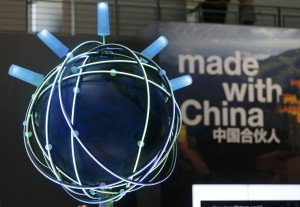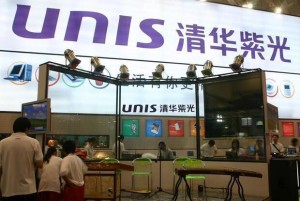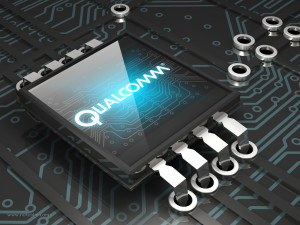26
Apr 2016
CHINA’S SEMICONDUCTOR INDUSTRY
Yesterday, I wrote a final essay about how technology changes the way we live. As I reflect, can you imagine how that thing changes our life in many aspects! In daily life, we are spoiled by the internet. Fast, fast, fast. Everything’s becoming more and more instant. Even the nature of business has been changing.
Recently, I’ve been attracted with China’s commitment in improving quality. Yes, quality, not quantity anymore. If you are following news about China, China has been helping many developing countries to improve their infrastructure. “Fast and Safe”, I could say, if not, how come other countries locked deal with China to improve their infrastructure! And I also witness it by myself and experience it.
The ‘confusing maze’ infrastructure in China
Chinese government has been tidying up their “business” one by one. In this article, we’ll dig out more about China’s semiconductor industry.
Serious Plan
It is final that over the next decade, China plans to invest almost RMB 1 trillion (US$161 billion) into its domestic semiconductor industry. China seeks to become a global power in the sector. Beijing again and again has stated that developing its own integrated circuit industry is an integral national strategic concern.
Good news is that for sure, China offers potential rewards for investors and producers of semiconductors, but considerable risks and obstacles as well. The obligation for large scale production and advanced research and development to compete and earn profits in this capital-intensive industry is the hindrance that needs to be broken. In addition, the concerns over IP protection and cyber espionage add another risk to the industry. A clear understanding of the industry and the government’s incentive structure is therefore essential for success and I hope this article may give you the insights.
China’s Semiconductor Industry
For your information (and for me too! LOL), China is the world’s largest purchaser of semiconductors. It was accounting 56.6% of global consumption in 2014. Its consumption market grows at a very significant point. This is caused by its position as the world’s largest exporter of electronics, in which the use of semiconductors is essential.
But the thing is, over 90% of the semiconductors that China purchases are imported from other countries like the US, South Korea, Japan, and Taiwan. In reality, China spends more money importing semiconductors than it does oil.
This reality pushes China to reduce its reliance on foreign technology and to eventually become self-sufficient. Over its support of the domestic semiconductor industry, Beijing envisions 40% self-sufficiency by 2020 and 70% by 2025.
This remind us of Chinese Government’s agenda ‘Made in China 2025 ’. It aims not only to produce goods in China, but also to transform the reputation of its products from cheap, unreliable, and unimaginative to precise, high quality, and innovative.
What will government do to make this happen?
It’s been 16 years since China fundamentally transformed its semiconductor industry. In 2000, it was part of the government’s 10th Five Year Plan. Before, semiconductor companies were entirely state-owned. Since that plan was finalized, they were privatized and the sector was classified as an encouraged industry for foreign investment. But, foreign companies are concerned by China’s lack of IP protection.
Based on State Council Rule 18 and State Council Rule 4 policy (released in February 2011 and valid through 2017), there are several points that we can mark out:
– Continuation of preferential value-added tax for software products;
– Business tax exemption for qualified software makers and IC design firms when engaging in software development and testing, information system integration, IC design, consulting, and operation and maintenance;
– Two-year exemption and three-year half exemption or five-year exemption and five-year half exemption on enterprise income tax for IC manufacturers who meet particular design and/or investment targets;
– Two-year enterprise income tax exemption followed by three-year half exemption for new IC design firms and qualified software enterprises launching in China;
– Reduced 15 percent and 25 percent tax rates for IC manufacturers who meet particular design and/or investment targets; and
– Preferential enterprise income tax for qualified companies engaging in IC packaging, testing or manufacturing of special materials, and manufacturers of special IC equipment.
The government offers greater benefits to companies that meet high technological standards as an incentive to innovate and make more globally competitive products. Beijing is also adopting a more market-based approach by having government investments in the industry managed by private equity firms and overseen by investors rather than run directly by the government itself.
The Guerila Tactics
Mergers, acquisitions, and partnerships have been on the rise globally in an environment of slowing growth and rising costs for semiconductors. In 2013, Tsinghua Unigroup (government-affiliated private equity firm) purchased Chinese mobile chipmaker Spreadtrum and RDA Microelectronics for a combined US $2.7 billion. Intel later bought a 20% stake in the two companies for US $1.5 billion, and is poised to invest another US $5.5 billion in manufacturing semiconductors in China. Other chipmakers, such as Qualcomm and NXP, have established joint ventures with Chinese companies, and the former also established a China investment fund.
Tsinghua Unigroup
The interesting thing is while China is dependent on foreign companies for its semiconductors, foreign companies are also dependent on China to provide a market. In fact, about half of Qualcomm and NXP’s revenue and 20% of Intel’s comes from China. As a result, many foreign companies are sharing technology and forming partnerships with Chinese companies to avoid being left out of the Chinese market.
Qualcomm’s chip
On the other hand, this strategy has raised the suspicions of the U.S. government, however. In February 2016, Tsinghua Unisplendour, an affiliate of Tsinghua Unigroup, dropped a US $3.8 billion agreement to buy 15% of the American company Western Digital after the Committee on Foreign Investment in the United States (CFIUS) opted to investigate the deal. CFIUS has the power to block international deals deemed detrimental to American security interests. This surprised many observers, who did not expect any interference with a minority deal in a relatively low-tech company. Earlier that month, Fairchild Semiconductor, which holds multiple U.S. government contracts, rejected a US $2.46 billion Chinese bid in favor of a lower offer from an American company, likely due to concerns over CFIUS. Similarly, dynamic random access memory chip manufacturer Micron Technology, whose chips are used in U.S. weapons systems, rejected an informal US $23 billion offer from Tsinghua Unigroup on the presumption that it would be blocked by CFIUS due to national security concerns.
These failed deals highlight the difficulties that Chinese companies may experience with foreign governments unwilling to share technology essential for national security, and holding concerns over Chinese cyber espionage, to go along with longstanding skepticism over IP protection in China.
Wrapping Up
Chinese government is very committed to develop its domestic semiconductor industry. The government offers significant capital and various tax incentives to IC producers. In the long term, investors may obtain the benefits of Beijing’s support as it strives to become a global power in the industry. However, the capital-intensive nature of the semiconductor industry, its emphasis on costly R&D, and the necessity for increased IP protection, are still being real serious problems for China.
“You can’t choose your potential, but you can choose to fulfill it – Theodore Roosevelt”
Adapted from China Briefing
www.sbeinspection.com
Related articles:
Made in China 2025 Automation
China’s Priority in IP Protection
Chinese High-Tech Rice Cooker


































